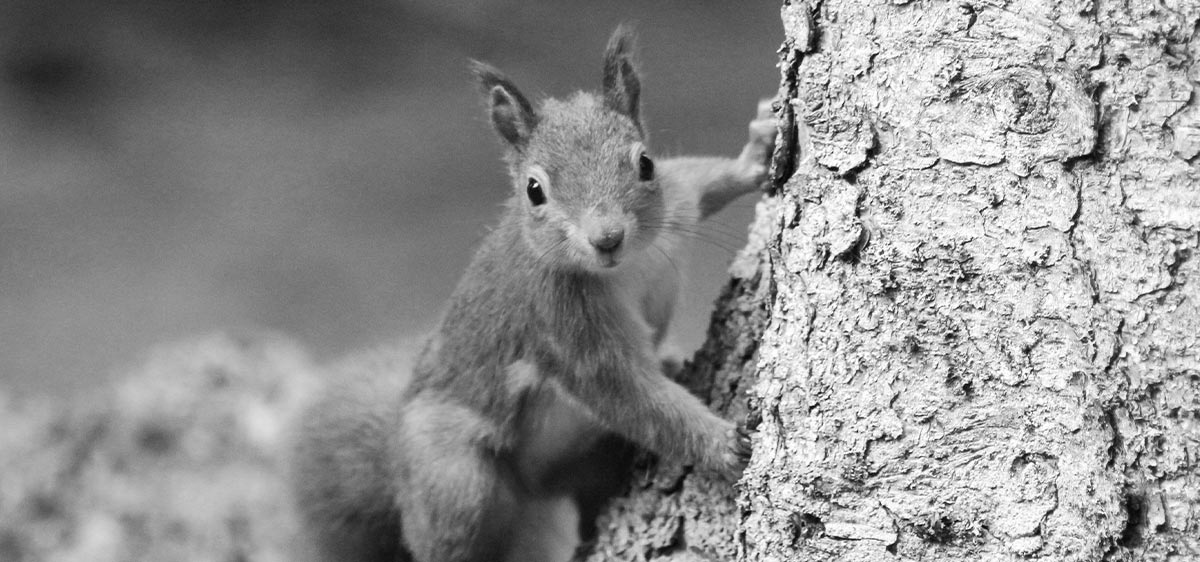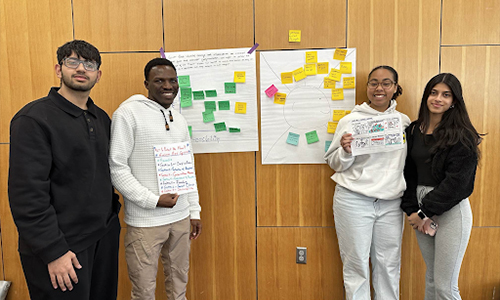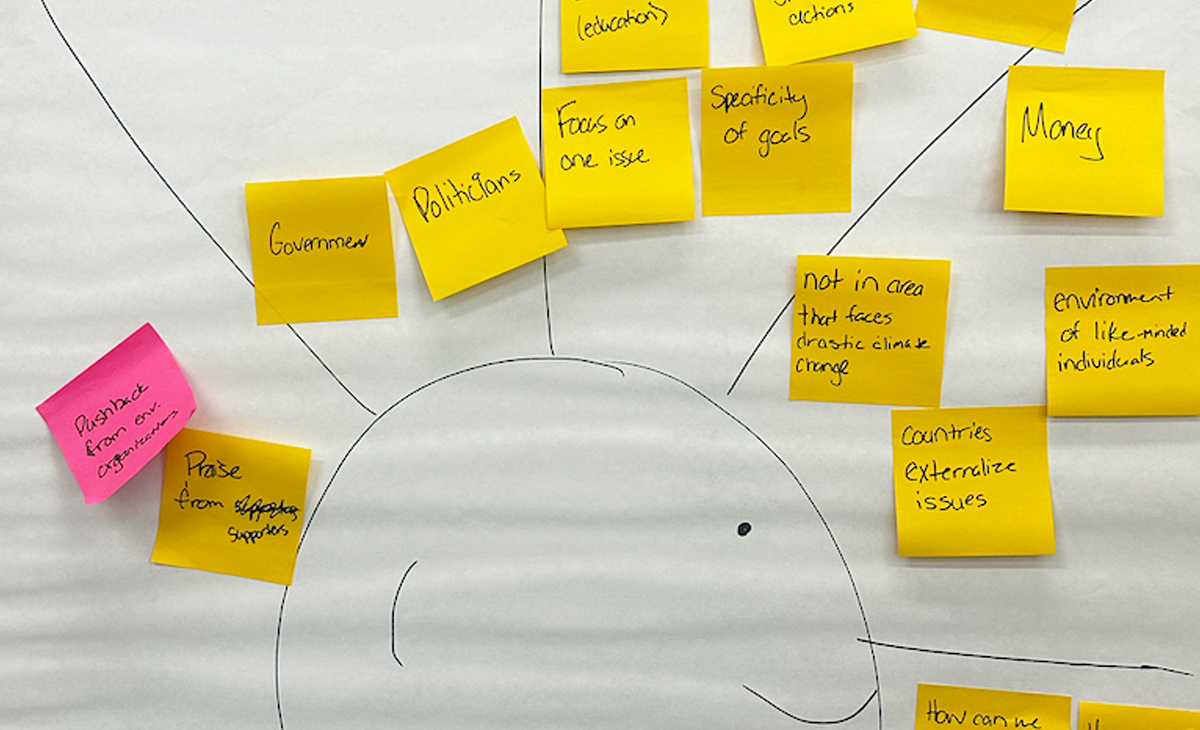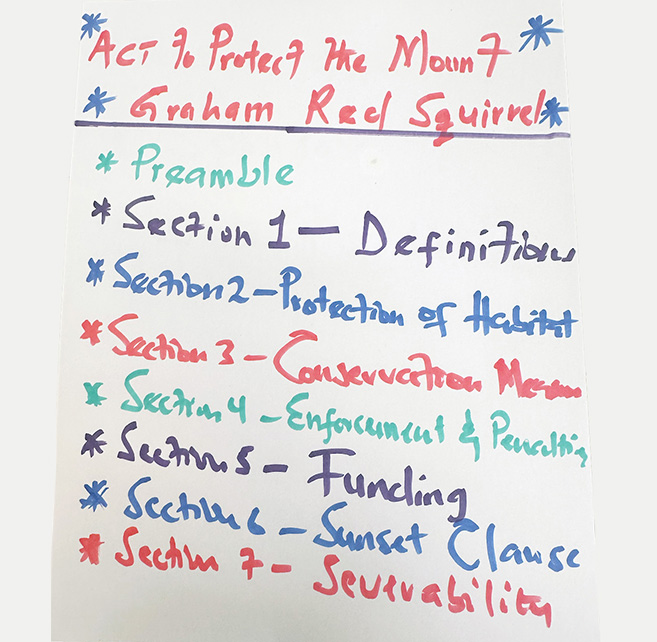
Protecting Mount Graham’s Red Squirrel
Presented by: Khush Manchanda, Reuben Aboteseem, Kennedy Gourdine, and Kumkum Thotambail Deepak
What’s the problem?
Nestled in the Pinaleno Mountains, also known as Mount Graham in Southeast Arizona, USA, lives the ‘endangered Mount Graham Red Squirrel (Tamiasciurus hudsonicus grahamensis), a unique subspecies of the North American Red Squirrel. These squirrels thrive in mixed-conifer forests, where dense woods and rich understories provide vital food and shelter. However, their survival is critically threatened by habitat loss, fragmentation, and human-induced pressures.
Driven by a passion for sustainability and climate change, our team was determined to find a solution to this pressing environmental issue.

But first...

How did our team get here?
At the beginning of the process, our group members used sticky notes to write three-word summaries of the causes of climate change, a topic important to our team. Each person shared their challenges, grouping them based on similarities. We then used stickers to vote on the most critical challenge. The final vote came down to the loss of biodiversity.
To understand the various stakeholders involved and their perspectives, we created an empathy map.
Once we decided that our issue would be biodiversity loss, we looked for examples in Arizona to keep our solution within the local context. This led us to the endangered Mount Graham Red Squirrel.
Our empathy map highlighted an alternative approach we decided against. We empathized with politicians, aiming for policies to protect wildlife and nature. However, politicians prioritize keeping stakeholders and benefactors happy, which often limits their actions.
This understanding led us to realize that our solution would
not be as effective from their perspective due to differing values.

Defining the problem
for a better solution
After successfully framing our problem, we began the ideation phase, where we generated ideas without any limitations. We wrote all our ideas on sticky notes and pasted them on white paper. In this phase, we did not constrain our solutions, considering all possibilities regardless of feasibility.
Next, during the idea prioritization phase, we categorized the generated ideas based on feasibility and impact. This process aimed to identify a solution with the highest impact and greatest feasibility.
Ultimately, this led us to choose the Habitat Protection Act.
The story
Storyboarding gave us clarity on what we were trying to accomplish and measurable goals for getting there. Through our vision above, we hoped to inspire others.
Pollution from human industrialization has created lots of habitat fragmentation and destruction. One of these habitats being destroyed is that of the Mount Graham Red Squirrel, an animal native only to the Pinaleno Mountains in Arizona. If their habitats continue to be destroyed, these animals will go extinct. Our solution is to make a bill that will protect these animals and their habitats, ensuring their survival for many years to come.

The prototype
Using the steps we learned at the Principled Innovation Academy event, the team was able to create a tangible solution to our problem.
Our model represents the Squirrel Protection Act bill that should be passed. In it are sections about defining the issue, what habitat protection will look like, conservation efforts, how to enforce the act, funding, sustainability, effects start date, and sponsors.
To learn more about our Act to Protect the Mount Graham Red Squirrel, watch our presentation!
